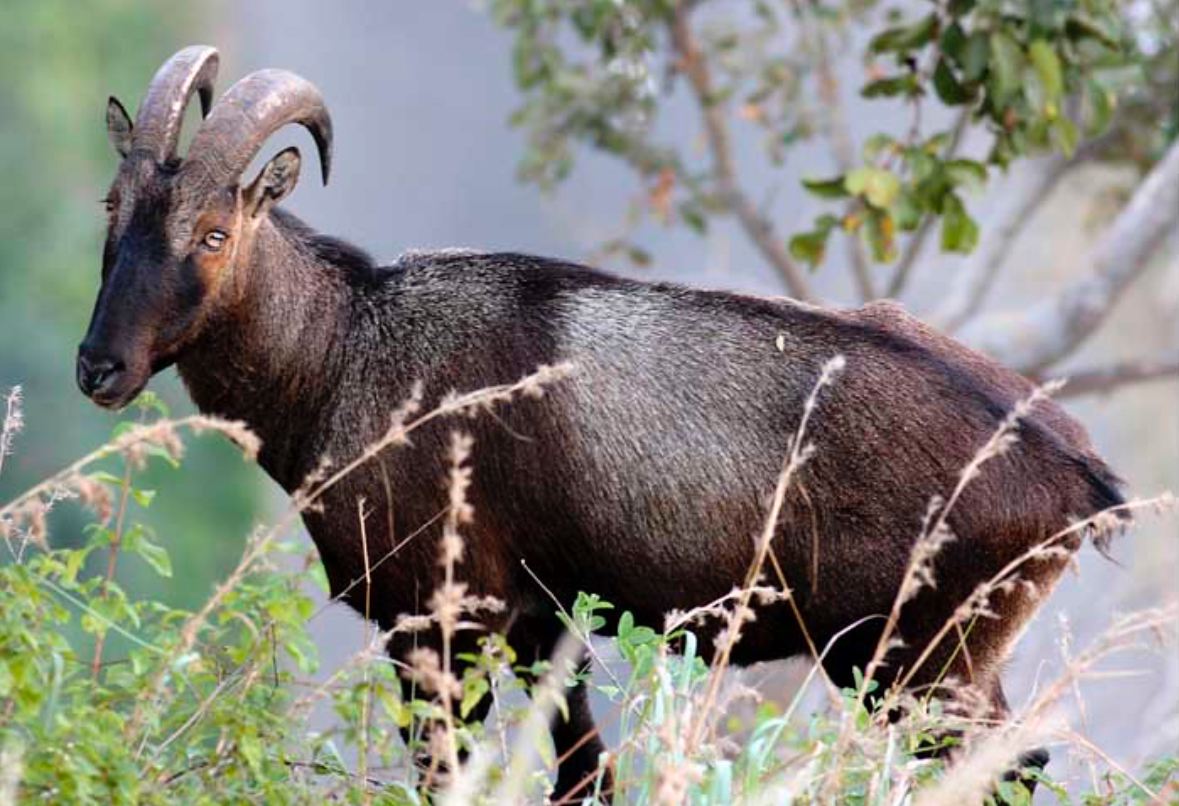Project Nilgiri Tahr
2023 OCT 13
Preliminary >
Environment and Ecology > Species extinction & protection > Species in news
Why in news?
- Ten months after the announcement, the Tamil Nadu government on Thursday launched an exclusive project for the conservation of Nilgiri Tahr, the state animal which once inhabited a large portion of the biodiversity-rich Western Ghats.
About Nilgiri Tahr

- IUCN Conservation Status: Endangered
- Wildlife (Protection) Act of India, 1972: Schedule I
- It is endemic to the Nilgiri Hills and the southern portion of the Western Ghats in the states of Tamil Nadu and Kerala in Southern India.
- The Nilgiri tahr inhabits the open montane grassland habitat of the Southwestern Ghats montane rain forests eco-region.
- At elevations from 1,200 to 2,600 metres (3,900 to 8,500 ft), the forests open into grasslands interspersed with pockets of stunted forests, locally known as sholas.
- Eravikulam National Park in Kerala is home to the largest population of this Tahr.
- It is estimated that there are 3,122 Nilgiri Tahrs in the wild. It has become locally extinct in around 14% of its traditional shola forest-grassland habitat.
- Nilgiri Tahr has found rich mention in Tamil Sangam literature such as Chilapathikaram and Civaka Chintamani, and depicted in the Late Mesolithic (10,000-4,000 BC) paintings.
Add ons
- There are three different Tahr species in the world. Apart from Nilgiri Tahr, Himalayan Tahr and Arabian Tahr are other two species.
- Adult male Nilgiri Tahrs develop a light grey area on their backs, thus are called “saddlebacks”. (Similar to “silverbacks” in Chimpanzees)
PRACTICE QUESTION
Consider the following statements regarding Nilgiri Tahr:
- It is endemic to the State of Tamil Nadu.
- It is the only Tahr species found in India.
Which of the statements given above is/are correct?
(a) 1 only
(b) 2 only
(c) Both 1 and 2
(d) Neither 1 nor 2
Answer
